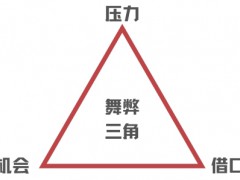自2015年以來,圭亞那共獲得了31個石油發現,僅在2022年就有5個新發現。
僅從目前正在開發的項目來看,圭亞那有望成為世界上最大的20個產油國之一。
圭亞那正尋求組建一家國有石油公司,以確保對該國石油行業的主導地位,巴西國家石油公司(Petrobras)是潛在合作伙伴。
據今日油價5月12日報道,南美洲最新石油生產國圭亞那,正在繼續努力為其石油繁榮奠定基礎。2015年,全球能源巨頭埃克森美孚(ExxonMobil)在圭亞那近海660萬英畝的Stabroek區塊首次發現石油,埃克森美孚作為運營商持有45%的開采權益,其合作伙伴Hess持有25%的權益。
隨后,埃克森牽頭的財團發現了一系列高質石油,最新發現發生在2022年4月。埃克森美孚在Stabroek區塊東南部的Barreleye-1、Patwa-1和Lukanani-1井發現了石油。這是自2022年初以來的第五個發現,自埃克森美孚開始在該區塊鉆井以來,總共獲得了31個石油發現。
根據最新發現,埃克森美孚將其對Stabroek區塊可采石油資源估計上調至近110億桶。這使得圭亞那石油儲量超過了鄰國哥倫比亞、厄瓜多爾和阿根廷,要知道,這些國家都是南美五大石油生產國。
自2015年埃克森美孚首次發現石油以來,圭亞那在很短的時間內就成為拉丁美洲和加勒比地區第七大石油生產國。自Liza Unity FPSO于2022年2月上線以來,作為Liza第二階段開發的一部分,圭亞那石油日產量已超過13萬桶。值得一提的是,埃克森美孚正在Stabroek區塊開發價值90億美元的Payara項目,該項目將于2024年開始運營,日產量將達到22萬桶。這家能源巨頭最近還承諾投資100億美元開發位于Stabroek海上區塊的Yellowtail項目,該項目在2025年投產后最終日產量將達到25萬桶。
僅由埃克森牽頭的財團在Stabroek區塊開發的項目,就將使圭亞那成為全球前20大產油國之一。埃克森美孚估計,到2027年,圭亞那每天將從Stabroek開采120萬桶原油,按2021年的石油產量計算,圭亞那將排名全球第17位。
這一最新進展凸顯了Stabroek區塊對埃克森美孚日益增長的重要性,預計該區塊將成為該公司原油生產的一個主要來源。低運營成本進一步增強了該區塊吸引力。Liza一期開發期間的收支平衡點為每桶35美元(布倫特原油價格),而Liza二期一旦產能達到飽和,預計將在每桶25美元的水平上實現盈虧平衡。
即將投產的Payara和Yellowtail項目預計將在每桶32美元和29美元時實現收支平衡。這些行業內較低的盈虧平衡價格,突顯了Stabroek區塊對埃克森牽頭財團的可觀盈利能力,特別是在考慮開采石油的低碳強度時。
越來越多的人猜測,圭亞那原油產量將在2027年之前達到埃克森美孚120萬桶/天的目標,原因是新發現石油數量穩定,可開發石油資源不斷增加,投資增加,以及重要行業基礎設施的加快建設。圭亞那正在考慮一系列措施,旨在通過增加勘探、油田開發和關鍵基礎設施投資來加速石油繁榮。該國正在考慮一項關鍵措施,即成立一家國有石油公司,如果該公司被采納,圭亞那將效仿拉丁美洲鄰國石油生產國所采用的模式。此舉將阻止埃克森牽頭的財團競標進一步的勘探許可證,并增強政府對該行業的主導權。到目前為止,該行業一直掌握在這家全球石油巨頭手中。
這將解決人們對埃克森美孚與圭亞那交易的部分擔憂。分析人士稱該交易具有剝削性,會對圭亞那不利。行業分析人士認為,該國從埃克森美孚獲得的回報低于平均水平,而智庫Global Witness認為,圭亞那通過這筆交易損失了550億美元。圭亞那正在尋找一個戰略合作伙伴來組建企業,并表示可以在中東找到合作伙伴。雖然圭亞那在中東有相當多的行業經驗,尤其是國有石油行業和政府主導的石油公司,但它可以找到一個離家更近的合作伙伴。
圭亞那與鄰國巴西舉行會談,巴西國家石油公司正在推動世界上最大的海上石油繁榮之一。以前曾就在圭亞那建設關鍵石油工業基礎設施,特別是圭亞那大西洋海岸的一個深水港與巴西利亞進行過協商,該港口將為海上石油工業提供關鍵支持。這一設施不僅將為圭亞那服務,而且還將為缺乏關鍵運輸基礎設施的巴西北部服務。在圭亞那和巴西最近的討論中,確定了四個發展領域,包括深水港、公路鐵路線、能源走廊,以及光纖通信技術的引進。隨著基礎設施的開發和投入使用,它將為能源公司提供更多進入圭亞那近海領域的途徑,加速這個國家的石油繁榮。這種合作可能會讓“與巴西國家石油公司合作”成為一種更合理的選擇,尤其是在考慮到該國有石油公司可觀的深水鉆井專業知識的情況下。
王佳晶 摘譯自 今日油價
原文如下:
Guyana Is On Track To Become A Leading Global Oil Producer
Since 2015, there have been 31 oil discoveries in Guyana, with five new discoveries in 2022 alone.
based purely on the projects that are currently being developed, Guyana is on course to become one of the 20 largest oil-producing countries in the world.
The government of Guyana is now looking to form a national oil company to ensure control over its oil industry, with Brazil’s Petrobras as a potential partner.
South America’s latest oil-producing nation, the former British colony of Guyana, is continuing to lay the groundwork for its oil boom. In 2015, global energy supermajor ExxonMobil, which is the operator holding a 45% working interest, and partners Hess with 30% and CNOOC holding 25%, made their first discovery in offshore Guyana in the 6.6-million-acre Stabroek Block. The Exxon-led consortium then went on to make a swath of high-quality oil discoveries with the latest occurring in April 2022. Exxon found oil with the Barreleye-1, Patwa-1, and Lukanani-1 wells which were drilled in the southeast of the Stabroek Block. That is five oil discoveries since the start of 2022 and a total of 31 finds since Exxon started drilling in the Block. The latest discoveries saw Exxon upgrade its estimate for the Stabroek Block’s recoverable oil resources to nearly 11 billion barrels. That endows Guyana with more oil reserves than nearby Colombia, Ecuador, and Argentina, all of which rank among the top-5 petroleum-producing nations in South America. In the short period since Exxon’s first 2015 discovery, Guyana has become the seventh-largest oil producer in Latin America and the Caribbean. The deeply impoverished former British colony has been pumping over 130,000 barrels per day since the Liza Unity floating, production, storage, and offloading vessel (FPSO) came online in February 2022 as part of the Liza Phase 2 development. Exxon is developing the $9 billion Payara project in the Stabroek Block, which on commencing operations in 2024 will pump up to 220,000 barrels per day. The energy supermajor also recently committed to the $10 billion Yellowtail development, also in the offshore Stabroek Block, which will eventually produce 250,000 barrels daily after coming online in 2025. The projects being developed by the Exxon-led consortium in the Stabroek Block alone will catapult Guyana to become a leading top-20 oil-producing nation globally. Exxon estimates that it will be pumping 1.2 million barrels of crude oil daily from Stabroek by 2027, which based on 2021 oil production will see Guyana ranked 17th globally.
The latest developments underscore the growing importance of the Stabroek Block for Exxon with it expected to become a major source of crude oil production for the company. The block’s attractiveness is further enhanced by low operating costs. Liza Phase 1 has a breakeven price of $35 per barrel Brent while Liza Phase 2 once it reaches full production capacity is expected to break even at $25 per barrel. The Payara and Yellowtail projects on commencing operations are expected to break even at $32 and $29 per barrel Brent respectively. Those industry-low breakeven prices underscore the considerable profitability of the Stabroek Block for the Exxon-led consortium, particularly when the low-carbon intensity of the oil being extracted is considered.
There is growing speculation that Guyana’s crude oil output will reach the 1.2 million barrels per day targeted by Exxon before 2027 because of the steady volume of new oil discoveries, rising exploitable oil resources, increased investment, and the building-out of vital industry infrastructure. The national government in Georgetown is considering a range of measures aimed at accelerating Guyana’s oil boom by bolstering investment in exploration, oilfield development, and critical infrastructure. A key measure being considered by Georgetown is the formation of a state-run oil company, which if adopted will see Guyana follow the model used by neighboring oil producers in Latin America. Such a move would block the Exxon-led consortium from bidding on further exploration licenses and boost the government’s control over the industry, which until now has been in the hands of the global oil supermajor.
That would address some of the concerns raised regarding the deal made by Exxon with Georgetown, which analysts labeled as exploitive and unfavorable for the impoverished South American nation. Industry analysts believe that Georgetown is receiving a below-average return from Exxon, while think tank Global Witness believes that Guyana’s government has forfeited $55 billion through the deal. Guyana’s government is seeking a strategic partner to form such an enterprise with it flagging that such a partner could be found in the Middle East. While there is considerable industry experience in the Middle East, notably with nationalized oil industries and government-controlled petroleum companies, Georgetown could find a partner far closer to home.
Guyana’s government has held discussions with neighboring Brazil where national oil company Petrobras is driving one of the world’s largest offshore oil booms. There have been previous consultations with Brasilia regarding the construction of crucial oil industry infrastructure in Guyana, notably a deep-water port on Guyana’s Atlantic coast which will provide crucial support to the offshore oil industry. Such a facility would service not only Guyana but also northern Brazil where there is a shortage of critical transport infrastructure. In recent discussions between Georgetown and Brasilia, four areas of development were identified; the deep-water port, a road-rail link, an energy corridor, and the introduction of fiber optics communications technology. As that infrastructure is developed and commissioned it will provide greater access to offshore Guyana for energy companies causing the former colony’s oil boom to accelerate. Such cooperation could make partnering with Petrobras a more logical choice than seeking a deal with a Middle Eastern entity, especially when the national oil company’s considerable deep-water drilling expertise are considered.
免責聲明:本網轉載自其它媒體的文章及圖片,目的在于弘揚石化精神,傳遞更多石化信息,宣傳國家石化產業政策,展示國家石化產業形象,參與國際石化產業輿論競爭,提高國際石化產業話語權,并不代表本網贊同其觀點和對其真實性負責,在此我們謹向原作者和原媒體致以崇高敬意。如果您認為本站文章及圖片侵犯了您的版權,請與我們聯系,我們將第一時間刪除。







